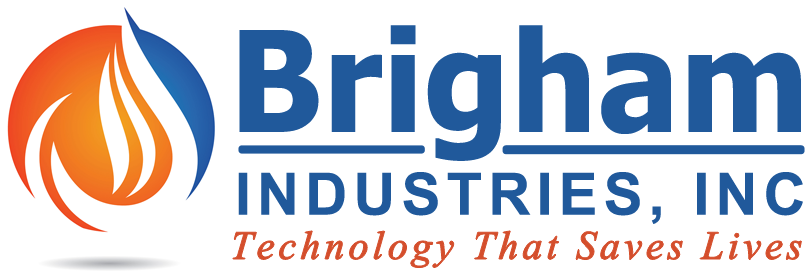Frequently Asked Questions
According to the policy 29 CFR 1910.134(e)(5), the following guidelines must be followed:
- Respirators must be fit-tested.
- A “test atmosphere” must be applied to assess the quality of fit.
- The fit-test must be applied to each and every employee required to wear a respirator.
- The fit-testing requirement applies to all negative pressure respirators including SINGLE-USE RESPIRATORS.
- The “test atmosphere” must be applied using recognized qualitative fit-testing procedures utilizing iso-amyl acetate, irritant smoke, etc.; or quantitative fit testing using DOP, NaCl, etc.
- Items F.1.-5. above shall be part of the training required in 29 CFR 1910.134(b)(3), ‘The user shall be instructed and trained in the proper use of respirators and their limitations.’
According to NFPA regulations the testing of SCBA’s must be completed periodically In 1852-14 7.5.1 it states that, “The organization responsible for the maintenance of the ACBA shall perform periodic testing in accordance with the part of the ACBA program component for maintenance as specified in 4.2.6 In all cases, SCBA shall be tested at least annually on a breathing machine that meets the requirements specified in 7.5.5 and 7.5.6.” Furthermore the regulations state in 7.2.1.3 that “The SCBA shall be tested on a breathing machine…in accordance with the organization’s SOPs or in accordance with the SCBA manufacturer’s instructions, whichever is more frequent, but in all cases at least annually.”
OSHA regulations edited on 3/3/99 state the following regarding the use of eyewear:
“NIOSH is recognized by law as the approving agency for respirators. In this capacity it has developed a respirator policy which precludes any condition that prevents a complete seal between the respirator face piece and the wearer’s face. This concept has also been incorporated into OSHA’s respirator standard under [29 CFR 1910.134.(g)(1)(i)], which states,
[(1) Facepiece seal protection.
(i) The employer shall not permit respirators with tight-fitting facepieces to be worn by employees who have:
(A) Facial hair that comes between the sealing surface of the facepiece and the face or that interferes with valve function; or
(B) Any condition that interferes with the face-to-facepiece seal or valve function.”
Studies have indicated that the use of eyewear is a condition that interferes with face-to–facepiece seal and/or valve function
OSHA regulations edited on 3/3/99 state the following regarding the growth of facial hair:
“NIOSH is recognized by law as the approving agency for respirators. In this capacity it has developed a respirator policy which precludes any condition that prevents a complete seal between the respirator face piece and the wearer’s face. This concept has also been incorporated into OSHA’s respirator standard under [29 CFR 1910.134.(g)(1)(i)], which states,
[(1) Facepiece seal protection.
(i) The employer shall not permit respirators with tight-fitting facepieces to be worn by employees who have:
(A) Facial hair that comes between the sealing surface of the facepiece and the face or that interferes with valve function; or
(B) Any condition that interferes with the face-to-facepiece seal or valve function.”
Studies have indicated that the growth and existence of facial hair is a condition that interferes with face-to–facepiece seal and/or valve function.
In addition to this regulation facial hair is also discussed regarding the conducting of fit testing. It states that: “ The test shall not be conducted if there is any hair growth between the skin and the facepiece sealing surface, such as stubble beard growth, beard, mustache or sideburns which cross the respirator sealing surface.”
1910.134(m)(2)(i)
The employer shall establish a record of the qualitative and quantitative fit tests administered to an employee including:
1910.134(m)(2)(i)(A)
The name or identification of the employee tested;
1910.134(m)(2)(i)(B)
Type of fit test performed;
1910.134(m)(2)(i)(C)
Specific make, model, style, and size of respirator tested;
1910.134(m)(2)(i)(D)
Date of test; and
1910.134(m)(2)(i)(E)
The pass/fail results for QLFTs or the fit factor and strip chart recording or other recording of the test results for QNFTs.
1910.134(m)(2)(ii)
Fit test records shall be retained for respirator users until the next fit test is administered.
In the revised (6/2/05) document which addresses the standard interpretations of SCBA cylinder interchangeability it states:
“Recently it has come to our attention that some manufacturers are promoting their lower priced cylinders for use on other manufacturer’s self-contained breathing apparatuses (SCBAs). They are also telling their customers that this practice is allowed by OSHA standards. This statement is misleading. Employers who use components from other manufacturers on respirator equipment are voiding the NIOSH approval for their respirators.
…In non-emergency situations, OSHA still expects SCBA’s to be maintained and used in their approved condition.”
These interpretations are taken from these documents: 1910.134(d)(1)(ii); 1910.156(f)(1)(iv); 1910.120(q)(3)(x)
Interested In Working With Us?
We can offer lease purchase packages.
We accept MasterCard, Visa, and Discover.
